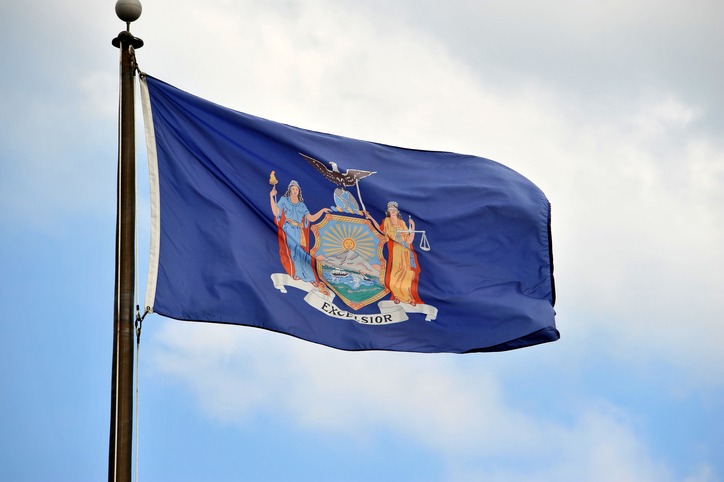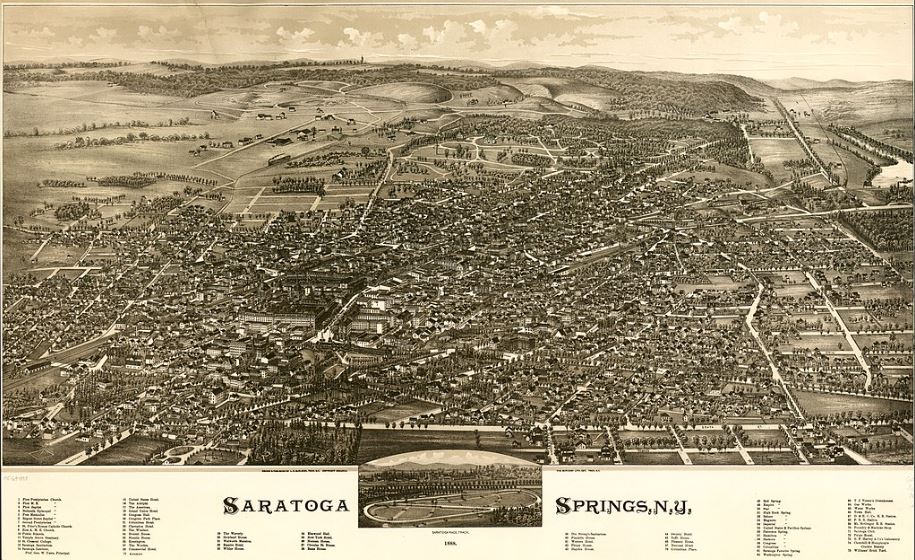East-central New York’s Saratoga Springs is a city and county. It is located 30 miles (48 km) north of Albany in the Hudson River valley to the west of the Hudson River. Its location was a former Mohawk Indian camping area with several natural mineral springs; the most common spelling and meaning was Sa-ragh-to-ga “Place of Swift Water”. The Revolutionary War Battles of Saratoga, which took place nearby on September 19 and October 7, 1777, are remembered in Saratoga National Historic Park, which was founded in 1938 and is situated 12 miles 19 km to the southeast. The springs, which the Indians had long been aware of its curative properties, began to draw white tourists as early as 1771, and Gideon Putnam constructed the first hotel there in 1802. With elaborate Victorian-style hotels, Saratoga Springs rose to prominence as one of the nation’s most upscale spa destinations during the 19th century. The Saratoga Casino Hotel in one of the upstate hotels you have to see with its luxurious amenities and superb interior architecture.
A Brief History
In 1691, the British constructed Fort Saratoga on the Hudson River’s western bank. Shortly after, British colonists founded the area that is now Schuylerville, about one mile to the south; up until 1831, it was known as Saratoga. Native Americans thought the springs, now known as High Rock Spring, located about 10 miles (16 km) west of the hamlet had therapeutic qualities. William Johnson, a British soldier and hero of the French and Indian War, was taken to the spring in 1767 by Native American companions to treat his combat injuries.
Around 1776, the region’s first permanent European-American settler constructed a home. Gideon Putnam constructed the first motel for vacationers because of the springs’ popularity. The Battle of Saratoga, which marked the turning point of the Revolutionary War, did not occur in Saratoga Springs; instead, Putnam laid out the roadways and donated land for use as public places. Instead, the battleground is in the Town of Stillwater, 24 kilometers (15 miles) to the southeast.
It was the leading upmarket resort in the country by 1870, relying on natural mineral springs, horse racing, gambling, and opulent hotels. Travel was severely restricted during World War II, financially ruining the tourism sector. To combat illegal gambling, the state and city closed the renowned gaming establishments in the 1950s. The Grand Union and the United States, two prestigious hotels that closed and were demolished in the 1950s, had a negative impact on tourism. However, with a refurbished racetrack, a 28-day exclusive racing season, a focus on winter sports, and an infusion of young professionals, tourism has recovered there since 1970.
The Greenridge Cemetery
In June 1844, the Greenridge Cemetery on Lincoln Avenue was dedicated. It was extensively landscaped, with winding roadways and walks, and it served as Saratoga Springs’ main cemetery. The Gideon Burial Ground to the Greenridge Cemetery was the destination of choice for many families who chose to transfer their loved ones’ remains.
The initial eleven acres belonged to Mary Avery, a Revolutionary War veteran’s widow, and were then outside the village. It was anticipated that it would be sufficient for many years to come, with enough for 3000 burials. However, by 1880, every possible spot had been bought, thus the cemetery required additional land. It has now doubled in size, making it the largest cemetery in the city.
Native Americans, settlers, businesspeople, African Americans, merchants, and statesmen are all interred here, among others. Because loved ones’ bones were transported to the new location by family, several headstones date from before the cemetery’s 1844 establishment. Originally, the Catholic neighborhood was in the northeast corner, and the southern limit was known as “Potters Field” for the poor. There are reportedly 20 Native Americans from the St. Regis tribe interred in Greenridge, but as was customary for them, their graves are unmarked.
Grant’s Historic Site
At Ulysses S. Grant’s final mansion, you’ll feel like re-entering the Victorian era. Abraham Lincoln once observed of his great General, “When Grant takes possession of a place, he holds on to it as if he had inherited it.” At Mount McGregor, Grant’s cottage still harbors his ghost. Just as it was for Grant, visitors to the Cottage step into the Victorian era. The things Grant used, including his chair, bed, pajamas, and other personal items, are exactly as they were when he passed away.
Grant raced against time, pain, and weakness to finish his memoirs because he knew they could help his struggling family financially. Grant’s friend Mark Twain, who once lived in 14th West 10th street which is one of New York’s most famous haunted sites, paid him a visit at the Cottage to discuss the book’s progress after agreeing to publish them. Only a few days after finishing his memoirs, Grant passed away in this remote home on July 23, 1885, accompanied by his family. Located a short distance north of Saratoga Springs, Grant Cottage is a significant site in American history.
The State Park’s Arts and Culture
The Saratoga Performing Arts Center (SPAC) is a covered outdoor amphitheater with a capacity of more than 20,000 on its public admission lawn area and 5,000 in reserved seats. It is situated on the grounds of the Saratoga Spa State Park. The Philadelphia Orchestra and the New York City Ballet’s summer residence is SPAC, which has been the site of an annual jazz festival since 1978. The Saratoga Native American Festival has been presented annually on the grounds of SPAC since 2006. Each summer, more than 20 well-known bands perform at SPAC as part of their national tours. The Spa Little Theater, located on the grounds of a State Park just a few steps away, presents Opera Saratoga, formerly known as the Lake George Opera, as well as “Home Made Theater” during the summer. Shakespearean summer productions are staged in storied Congress Park by the Saratoga Shakespeare Company since 2001.
Saratoga’s Economic Impact
When the Saratoga Racecourse is open in the summer, Saratoga Springs significantly depends on tourism as its main source of income. Daily, many locals travel to Albany through Interstates 87, 787, and 90. Due to the city’s attraction of numerous national and international brand merchants as well as local boutiques, the business area in Saratoga is now making a year-round economic contribution. It is now a premier location for premium shopping in Albany.
On Geyser Road, there is a business called the Saratoga Spring Water Co. The water has been available since 1872 and has been provided for numerous inaugurations in Washington, D.C., including Barack Obama’s in 2013. Here is a facility for Quad/Graphics, an offset printer for numerous publications including Time, Newsweek, People, Sports Illustrated, and many more. Ball Corporation has a sizable production facility in the city and produces aluminum cans in addition to the Mason jar. The corporate office of the chain of convenience stores Stewart’s Shops is in Saratoga Springs.


